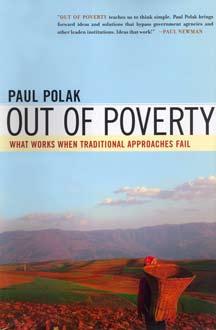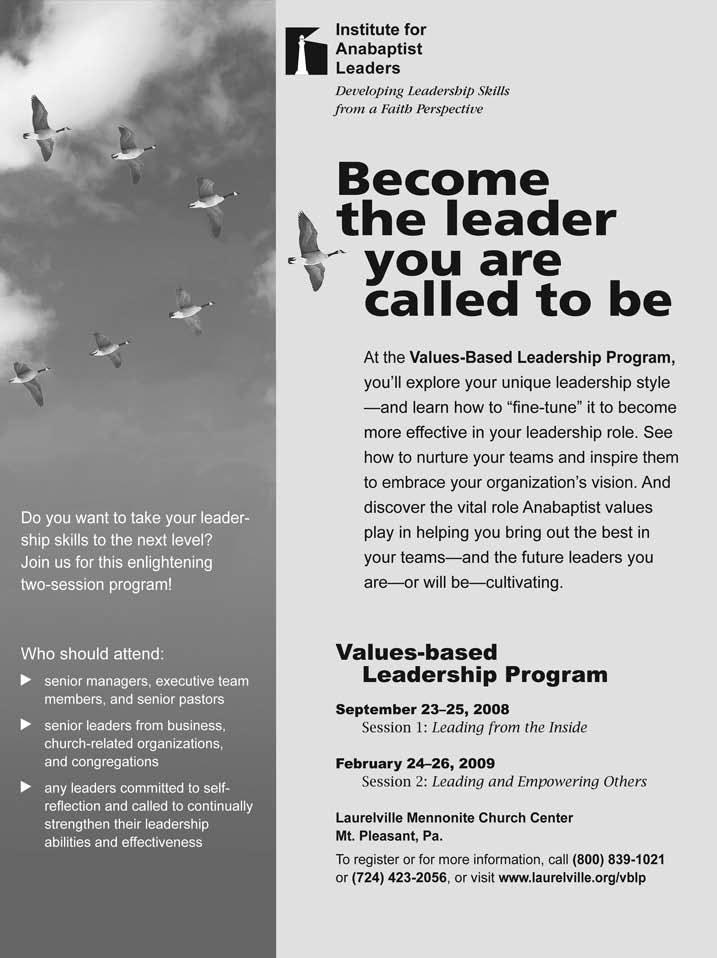
4 minute read
Reviews
What the poor really need
Out of Poverty: What Works When Traditional Approach-
es Fail. By Paul Polak (BerrettKoehler, 2008, 232 pp. $27.95 U.S. $30.95 Cdn.)
When Paul Polak looks at a slum he doesn’t see dilapidated shacks and dirty streets. He sees a market — a market for products like low-cost treadle pumps.
When he goes to a village he sees the residents as people to interview to get a better grasp of what they really need to overcome poverty.
His new book, which carries a cover endorsement by Paul Newman and has been described by The Economist as “wise and engaging,” lays out his vision for transforming the lives of poor people with products designed specifically to improve their economic lot in life.
A former psychiatrist, Polak switched over to the world of development in the early 1980s, founding International Development Enterprises (IDE) with several MEDA members. “I became convinced that the most significant positive impact I could have on world health was to work on finding ways to end poverty,” Polak writes.
For him and his colleagues at IDE, that meant helping “dollar-a-day” farmers boost crops with simple, affordable irrigation technology like treadle pumps and drip kits, something at which IDE has become a world leader.
His approach is a blend of compassion for the poor with strong business fundamentals (see sidebar). One of them is to listen to the market and hear what customers are saying.
“Talk to the people who have the problem and listen to what they say,” he counsels. “If you haven’t had good conversations, with your eyes open, with at least 25 poor people before you start designing, don’t bother.”
Along the way he has plenty of critique for massive topdown programs that overlook the obvious as they concoct flawed responses that have
little impact at the bottom of the pyramid. He has little use for giveaway programs that shrivel on the vine when donor dollars dry up.
Excerpt: “Unleash market forces”
I believe the first step in finding a solution to just about any problem is to find ways to unleash market forces to solve it. If there is one thing I believe has created more obstacles to ending poverty than subsidies, it’s the commonly held notion that you can donate people out of poverty.
To move out of poverty, poor people have to invest their own time and money. The path out of poverty lies in releasing the energy of Third World entrepreneurs. The good news is that the small-acreage farmers who make up the majority of dollar-a-day people are already entrepreneurs, and they are surrounded by thousands of other small-scale entrepreneurs operating workshops, stores, and repair shops. All these entrepreneurs are willing and able to invest in creating their own wealth if they can gain access to opportunities that are affordable and profitable enough to attract them. — Paul Polak in Out of Poverty What he wants to do is help poor people put more cash in their pockets. Do that, he says, and you give them a direct path out of powerlessness. Helping them increase income “allows them to make their own choices about which root causes of poverty to address.”
He notes that there are 525 million farms in the world, of which 85 percent are smaller than five acres. Yet very little agricultural research goes into finding ways for these small farms to increase their productivity and income.
He cites examples of people who purchased IDE treadle pumps, earned more money as a result, and invested in other improvements. “When poor people earn more income, they often invest in home improvements such as replacing a thatch roof with corrugated tin that doesn’t leak.” Other improvements follow — nutrition, health and education, to name a few.
Poor people who gain access to new sources of income “continue to astonish me with what they are able to do for themselves.”
And while his approach is grassroots, he can still think big. “If you don’t think you can sell at least a million units at an unsubsidized price to poor customers after the design process is completed, don’t bother.” This goes for other products besides inexpensive irrigation pumps and drip systems. “Hundreds of markets, comparable in size and impact to the mass market for motorcars and computers, are waiting to be discovered,” among them items like inexpensive eyeglasses and home water filters. This will take “an army of entrepreneurs” whom he wishes to mobilize with this book.
Out of Poverty is friendly and easy to read. Its style, like Polak’s approach to poverty, is down to earth and rich with his irrepressible exuberance.
Businesspeople will like the way it champions the discipline and skill-set of the market as a high-impact development solution, providing the prominence it deserves but seldom receives in the battle against poverty. — WK




